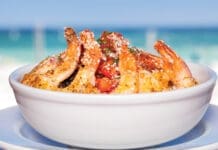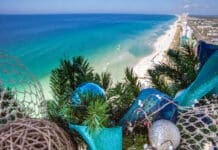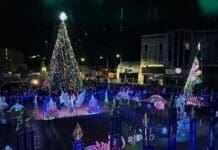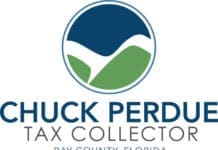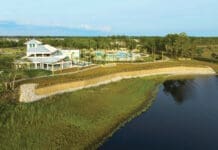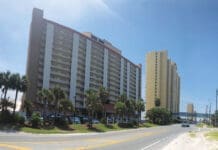 By Julie McConnell, UF/IFAS Extension Bay County
By Julie McConnell, UF/IFAS Extension Bay County
“Rain, rain, go away. Come again another day!” Seems to be the theme song of this summer. Hopefully we will start to transition into a drier fall because right now some of our landscapes are past the point of saturation. Although we are seeing some issues with plants that have suffered from too much water, one good thing about the high rainfall amounts is that it gives us all a chance to assess our yards under extreme conditions and offer some insight into ways to make them more resilient.
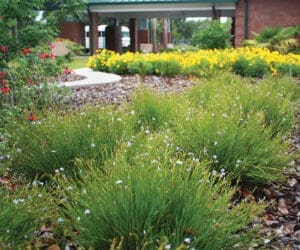 Like you, I have high hopes that we won’t see this much rainfall next year but realistically it is not unreasonable to have torrential downpours that temporarily flood parts of our landscapes. So, how do you plan for the unpredictability of Florida weather patterns? One way to hedge your bets is to choose plants that can tolerate periodic flooding for low or poorly drained sections in your yard. If you have identified areas of your landscape where plants fail following years of high rainfall, consider using native plants that are naturally found along stream banks where soil moisture levels vary throughout the year.
Like you, I have high hopes that we won’t see this much rainfall next year but realistically it is not unreasonable to have torrential downpours that temporarily flood parts of our landscapes. So, how do you plan for the unpredictability of Florida weather patterns? One way to hedge your bets is to choose plants that can tolerate periodic flooding for low or poorly drained sections in your yard. If you have identified areas of your landscape where plants fail following years of high rainfall, consider using native plants that are naturally found along stream banks where soil moisture levels vary throughout the year.
Some examples of plants native to our region that perform well even in saturated soils after establishment are listed below:
• Scarlet hibiscus Hibiscus coccineus 4-8’ tall perennial with scarlet flowers
• Swamp sunflower Helianthus angustifolius 4-8’ tall perennial with yellow flowers
• Stoke’s aster Stokesia laevis 6-12” evergreen perennial with blue/lavender flowers
• Blue-eyed grass Sisyrinchium angustifolium 4-8” iris-like perennial with light blue flowers
• Blue flag iris Iris virginica 1-3’ perennial with purple flowers (blooms taller than 3’)
• Swamp milkweed Asclepias incarnata 3-4’ tall deciduous perennial with pink flowers
• *Dwarf Fakahatchee grass Tripsacum floridanum 3-4’ tall clumping ornamental grass
• *Muhly grass Muhlenbergia capillaris 3-4’ tall clumping grass with bright pink flowers late summer/early fall
• Virginia sweetspire Itea virginica deciduous shrub with striking red stems, white flowers in the spring, 3-5’ tall
• *Wax myrtle Myrica cerifera large evergreen shrub or small tree, fragrant foliage, birds attracted to blue/gray berries
• *Beautyberry Callicarpa americana deciduous shrub 4-8’ tall, small purple flowers in spring followed by purple berries in the fall that attract birds
• *Buttonbush Cephalanthus occidentalis 6-12’ tall deciduous shrub, white flowers followed by red berries
• River birch Betula nigra 40-50’ deciduous tree with attractive exfoliating bark, yellow fall color, usually sold as multi-trunk
• Sweetbay magnolia Magnolia virginiana evergreen tree with oval leaves with silver underside, large white flowers, red berries; smaller than more well-known Southern Magnolia
• Bald cypress Taxodium distichum large deciduous tree with rust colored fall foliage, bright green leaves are very fine textured; may form knees if soil remains wet for extended periods
• *Black Tupelo Nyssa sylvatica deciduous tree that reaches 75’ tall, red fall color, fruit is attractive to wildlife
*salt-tolerant plants
For more information about creating a rain garden in your home landscape visit https://tappwater.org/documents/Rain%20Garden%20Manual.pdf.
Julie McConnell can be reached at juliebmcconnell@ufl.edu. An Equal Opportunity Institution. UF/IFAS Extension, University of Florida, Institute of Food and Agricultural Sciences, Nick T. Place, dean for UF/IFAS Extension. Single copies of UF/IFAS Extension publications (excluding 4-H and youth publications) are available free to Florida residents from county UF/IFAS Extension offices.







